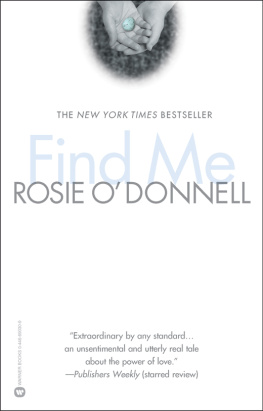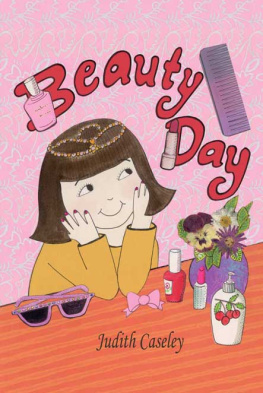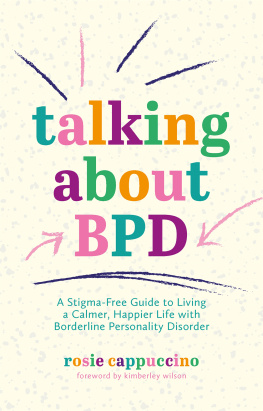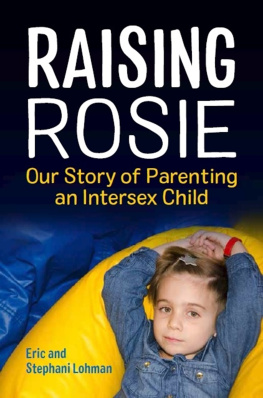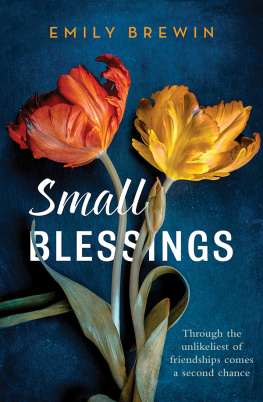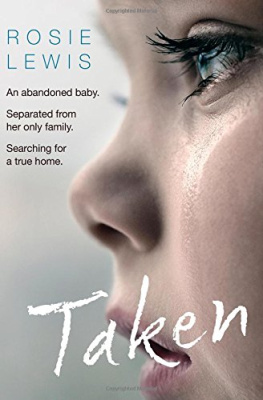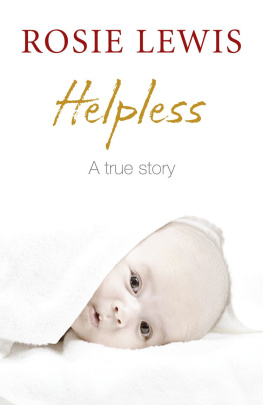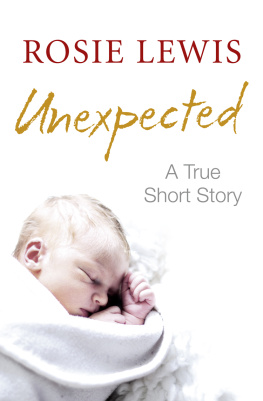The Goal: Friending
Treat everyone as THEY want to be treated. This is the Platinum Rule.
Tom Murphy
This is the story of an unlikely friendship that began with the new millennium, based on the Platinum Rule. In 1971, Rosie was born in Anaheim, California, to immigrant parents from Tanganccuaro, Michoacn. At age eighteen, she was locked up for murder, and has been behind bars for thirty-plus years. In 1940, Judith was born in Portland, Oregon, to a working-class white family that immigrated from England, Scotland, and Germany during the nineteenth century. At age fifty-four, the author was jailed briefly for committing civil disobedience at a nuclear-weapon research facility. This story focuses on the Platinum Rule at work in an unexpected friendship by highlighting the mutual respect, kindness, and affection between a contemplative activist great-grandmother and an artistic prisoner.
Spanish was Rosies mother tongue. She attended Catholic schools, had trouble learning to read, and dropped out before completing high school. Judith grew up speaking English, attending Protestant churches and public schools. She was too damn educated, according to her Teamster dad, a high school dropout.
Free citizens like Judith (and presumably you) may have more in common with inmates like Rosie than we did before COVID-19 restrictions were imposed. In the ninth month of Californias stay-at-home order, coronavirus infections surge and death tolls mount. So do fears about the future. Although personal responses to racial reckoning, social unrest, financial stress, political instability, and pandemic restrictions vary, free persons now encounter some conditions familiar to incarcerated persons. Where Rosie lives, in the Central California Womens Facility, twenty-two women undergo emotional stressors and physical limitations every hour of every day.
The state calls it Death Row. Rosie refers to it as d. row or Life Row.
The Inner Light
So the first step to peace is to stand still in the lightthe light that reveals whatever is opposed to it. And standing still there you will receive the power and strength to resist that part of you which the light has exposed. Because this is where grace grows, where God alone is seen to be glorious and powerful, and where the unknown truthunknown to the world out thereis revealed. The truth then liberates what has been held in prison, and in the course of time it revives it, leading it in time to the God who is beyond time.
George Fox, 1653
This book is about friending in the Light, the art and practice of listening beyond labels (killer, convict) for the is-ness of imprisoned persons who live under conditions of daily disrespect. It is about hearing what goes on in prison and maybe increasing your curiosity about getting to know other inmates in addition to Rosie. It is also an invitation to consider investing your own time, talent, tenderness, and treasure in reaching out to a lonely soul behind bars.
The early writings of Quakers gave rise to these pages. The Inner Light is the true author, for the first thing we must do in deciding to befriend a stranger is to face the truth of ourselves. I did that, and so did Rosie. Through friending, we gained some liberation and a measure of peace, though she will remain behind bars until her last breath. As Rosie wrote, This book is yours, Gods, and mine.
Humans have a long history of avoidance: we can come up with countless ways to hide unbearable truths from ourselves. When we do find the courage to face painful facts about our limitations, as the early Quakers did, our old sins can then become the source of new life. The Inner Light first makes us uncomfortable about the things we do wrong. When we notice that discomfort, and let the light into the conscience, as George Fox put it, this process has profound benefits. The Light frees us from powerful desires that made us act wrongly in the first place and makes possible the birth of a new, truer self.
In the sixteen-hundreds, at the very beginning of the movement that became The Religious Society of Friends, George Fox made it quite clear how people could find the truth that would free them, and described how to live each day in the light of that truth. Fox wrote a lot about the Inner Light. He set out to explain how The Light, a metaphor suggesting a candle in the dark, comes not from any human power but from the spirit of Christ residing within each person. When we wait expectantly in the Light and open our minds to whatever it reveals, we begin to see our motives for what they really are. The Inner Light searches out hidden sins by showing us our self-deceptions and errors, and it strengthens us to restore what has been ruptured.
Living in the Light opens our eyes to see that of God in each and every person. It infuses us with a warm regard for others and increases our spiritual expansiveness. While we cannot scientifically prove that of God pulsing through the bodies of all people, Friends take it on trust and test it through our own experience. When we act as if the seed of God is planted at the center of each human heart, it opens up a whole new set of possibilities. Quakers find that when enough people act compassionately, society itself begins to change. Instead of depending on fear and force to keep order, Friends rely on love and respect as a basis for mutual trust. For nearly four centuries, Quakers have been at the forefront of social and economic change by looking for the divine spark in others and genuinely yearning for everyones well-being. This is the crux of what I now see as the Platinum Rule.
So these pages are about the Quaker way of friending persons who endure daily indignities and disrespect. This book is about getting to know one incarcerated person a little better, and maybe getting to know your own dear self a little bit better too.
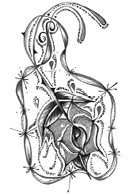
The Question: What Happened?
Cowriting Friending Rosie: Respect on Death Row required long seasons of prayerful attentiveness from both authors and steady support from one Quaker Anchor Committee. Through the synergy of frequent correspondence, two-way conversation, and individual introspection, Rosie and I gained greater understanding of why we did what we did and how to live with the consequences. We set out to answer hard questions.
What Happened with Rosie?
- What happened on June 15, 1990?
- How did Rosie wind up on Death Row, and how does she survive there?
- How did Judith get involved, and why does she stay involved?
- How does the art of friending strengthen both of us in turbulent times?
- What happens when wounded women on The Row live in close proximity?
- How can we practice hearing each other into truth?
- Which soul practices do we adopt to nurture our best qualities?
- How does mutual love nourish someones poetic what-is-ness?
The Inner Light is the true author of this book. These pages were written slowly and soulfully. We designed them to be read slowly and soulfully. The open spaces are here so you can catch your emotional breath. Rosies art is here because drawing is her primary language. Spanish was spoken where she grew up in Little Tijuana. In Catholic school, she struggled to read and write English. She has always communicated most authentically through imagery and calligraphy. When you slow down and gaze upon her artwork, you may glimpse Rosies soul shining through her designs.
In The Drum, my friends stories and letters offer sounds, sights, smells, tastes, and touches of daily life inside the cage at Central California Womens Facility. She lives on The Row in close proximity with twenty-two heartbroken souls. They are doing time together and doing their best to make a life together under very difficult conditions.



